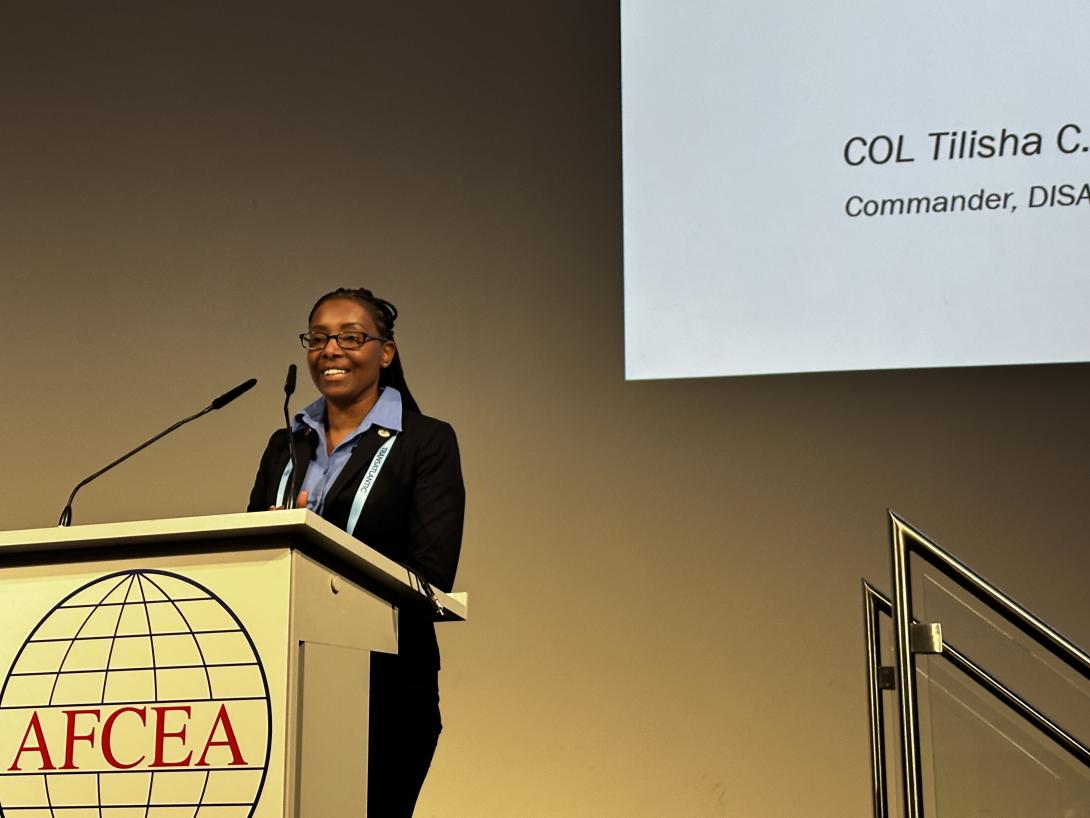DISA Europe Prepares for AI and Modern Warfare
With modern warfare requiring split-second information delivery to support decision-making in dispersed locations, Defense Information Systems Agency (DISA) Europe is examining the practices and solutions needed to support artificial intelligence (AI) across the continent, Africa and the Middle East.
“It brings some extensive amounts of opportunity in our modern warfare,” said Col. Tilisha Lockley, USA, commander of DISA Europe, about the implementation of AI. “However, it comes with its own set of challenges.”
It will require robust data management, standards, modern-day cloud, advanced networks and training, among other measures—as well as balancing these efforts with the 24/7 continued protection of its part of the Department of Defense Information Network, or the DODIN.
“My mission here in Europe is to provide, operate and maintain DISA’s portion of the DODIN and to also provide information systems and services throughout NATO and support of U.S. interest over 100 countries in Europe, Africa and the Middle East,” she stated at AFCEA’s TechNet Transatlantic on December 5 in Frankfurt, Germany.
The colonel stepped into the role on July 9, taking over from Col. Diane E. Klein, USA, who moved on to become the head of executive management at the NATO Communications and Information Agency in Brussels, Belgium.
Lockley is coming to DISA Europe from the Department of Defense’s (DoD’s) Chief Digital and Artificial Intelligence Office (CDAO), experience which will help DISA Europe build capabilities and network connectivity needed to enable AI and machine learning, said Lt. Gen. Robert Skinner, USAF (Ret.), the then DISA director and Joint Force Headquarters (JFHQ)-DODIN commander at Lockley’s change of command ceremony last summer. Skinner retired this fall, with Lt. Gen. Paul Stanton, USA, taking over at DISA and JFHQ-DODIN.
The view forward for DISA Europe is anchored in the DISA Next strategy, which outlines its vision for upgrading the network over the next five years.
“Our goal is to respond well to crisis, fight and win, and grow our advantage in cyberspace,” she stated. “And really, our goal is to simplify the warfighting environment. How best can we talk and communicate jointly with all domains integrated into one network? [We need to] increase lethality by ensuring that we're able to coordinate, operate and fight with our allies and partners, and having access to information and data so that we can deter aggression and win in any of our future wars.”
In its journey to support the application of AI, the agency is “diving deep” into using augmented intelligence for network operations, including monitoring network reliability and sending alarms with anomalies or suspicious behavior, the colonel said.
Further application of AI and machine learning across other end uses, however, requires a more robust data foundation.
“One of the main challenges that we have is data access,” Lockley said. “We can't have artificial intelligence for modern warfare without having the foundation to artificial intelligence, which is structured, organized data. We have to make sure that data is accessible, that it is not proprietary, it's not locked down, it's not in a specialized battle command network. It needs to be data that is provided, accessible and available at the speed of decision.”
Additionally, Lockley will apply her experience at the CDAO to data management and tagging.
“We [recognize] the intensive resources and time that we put into tagging and labeling our data,” the commander stated. “Every network has its own set of labeling and tagging requirements. And when we are trying to sort and structure data, it's difficult for us to understand what the labels and tags are if it's not a unified understanding and solution for tagging. Proprietary data has a different tag classification and different theaters have a different tag.”
And naturally, the agency’s approach to AI will be “against overly trusting” AI applications without human oversight. The agency will also look to the ongoing maintenance of algorithms and processes to avoid cybersecurity risks, biases and other issues.
Warfighters will need continuous training and education to maintain AI and machine learning systems, she added.
In addition, DISA Europe prioritizes the development of the NATO Secret Mission Partner Environment, a secret-level network that will integrate NATO and allied partners—a game-changing prospect.
Col. Lockley called for industry to help develop unified security classification solutions—once policy on that side is worked out—and continued zero-trust architecture. Companies should keep in mind that any cloud-based data-sharing solutions for DISA Europe will need to abide by the European Union data security standards.
“We don't fight alone, and as we maintain our advantage in cyberspace, it's important not only to share our information and build a network that integrates with our allies and partners, but it's also important to ensure that the tools that we use to provide a single pane of glass for the warfighter that is accessible to our mission partners and allies as well,” Lockley stated.
TechNet Transatlantic is organized by AFCEA International in conjunction with the AFCEA Europe office. SIGNAL Media is the official media of AFCEA International.






Comments